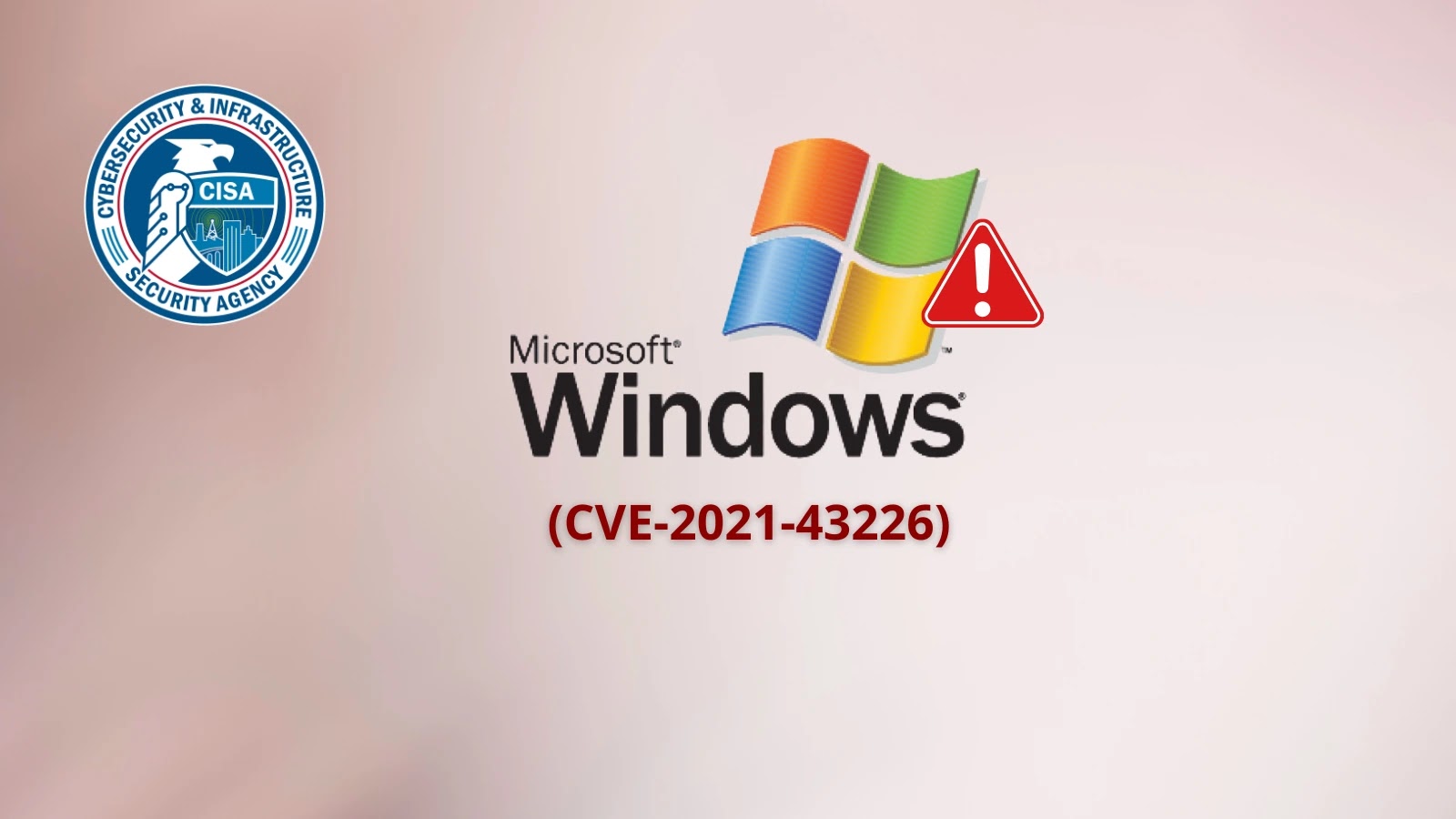On October 6, 2025, the Cybersecurity and Infrastructure Security Agency (CISA) added a critical security flaw, identified as CVE-2021-43226, to its Known Exploited Vulnerabilities (KEV) catalog. This vulnerability resides in the Microsoft Windows Common Log File System (CLFS) driver, a fundamental component responsible for managing transaction logs within the Windows operating system. The flaw poses significant security risks, particularly in enterprise environments, by allowing local, authenticated attackers to escalate their privileges to SYSTEM level access.
Understanding CVE-2021-43226
CVE-2021-43226 is a privilege escalation vulnerability stemming from improper validation of user-supplied data within the CLFS driver’s memory management routines. Attackers can exploit this weakness by crafting malicious CLFS log files that trigger buffer overflow conditions, leading to arbitrary code execution with elevated privileges. This exploit requires local access and at least standard user privileges, making it especially dangerous in scenarios where attackers have already gained an initial foothold through methods such as phishing or social engineering.
Affected Systems
The vulnerability impacts a wide range of Windows versions, including:
– Windows 10 (all versions)
– Windows 11 (all versions)
– Windows Server 2016
– Windows Server 2019
– Windows Server 2022
– Windows Server 2008 R2 SP1
– Windows 7 SP1
Security researchers have identified proof-of-concept exploit code circulating in underground forums, increasing the likelihood of active exploitation campaigns.
Risk Assessment
The vulnerability has been assigned a Common Vulnerability Scoring System (CVSS) 3.1 score of 7.8, categorizing it as a high-severity issue. The risk factors associated with CVE-2021-43226 include:
– Impact: Privilege escalation
– Exploit Prerequisites: Local access to the target system, authenticated user account, ability to execute code locally, and at least standard user privileges
Mitigation Strategies
In response to the active exploitation of this vulnerability, CISA has mandated that federal agencies and critical infrastructure organizations implement security patches by October 27, 2025. This directive aligns with Binding Operational Directive (BOD) 22-01, which emphasizes prompt action against vulnerabilities with evidence of active exploitation.
Organizations are advised to:
1. Apply Security Updates: Utilize the standard Windows Update mechanism or Windows Server Update Services (WSUS) for enterprise deployments to apply Microsoft’s security patches.
2. Prioritize Critical Systems: Focus on patching domain controllers, file servers, and other critical infrastructure components first to minimize potential impact.
3. Implement Temporary Mitigations: For systems unable to receive immediate updates, consider implementing Application Control policies and Windows Defender Exploit Guard as interim measures.
4. Monitor System Logs: Security teams should monitor for suspicious Event ID 4656 and 4658 logs, which may indicate unauthorized file system access attempts, particularly involving CLFS-related processes like clfs.sys and clfsw32.dll.
5. Conduct Vulnerability Assessments: Utilize tools such as Microsoft Baseline Security Analyzer or third-party scanners to identify vulnerable systems across the infrastructure.
Conclusion
The inclusion of CVE-2021-43226 in CISA’s KEV catalog underscores the critical nature of this vulnerability and the necessity for immediate remediation efforts. Organizations must act swiftly to apply the recommended security patches and implement mitigation strategies to protect their systems from potential exploitation. Maintaining vigilance and adhering to best practices in cybersecurity are essential to safeguarding enterprise environments against evolving threats.



